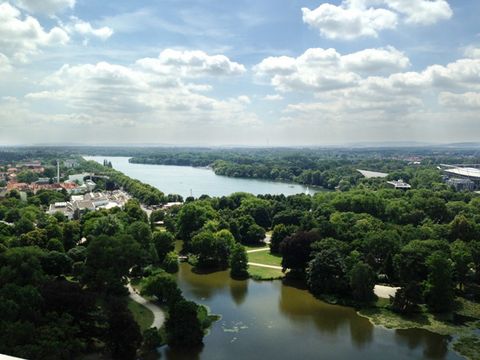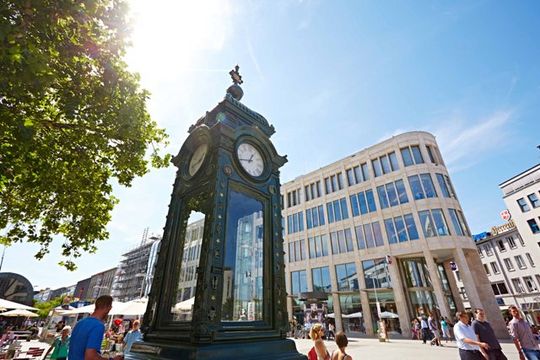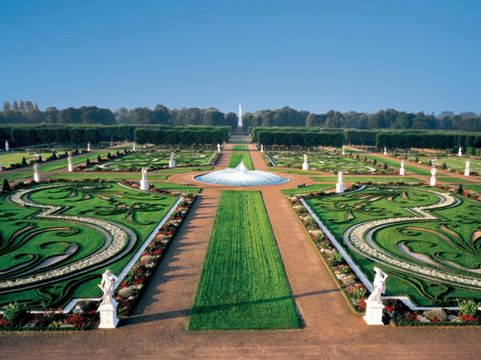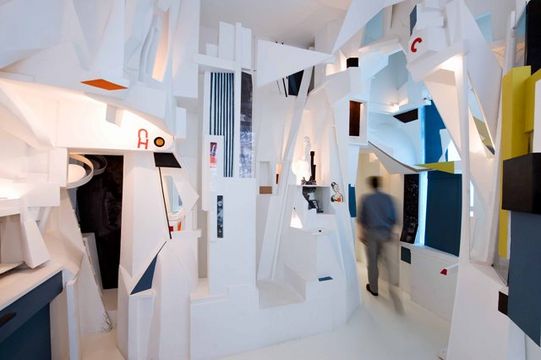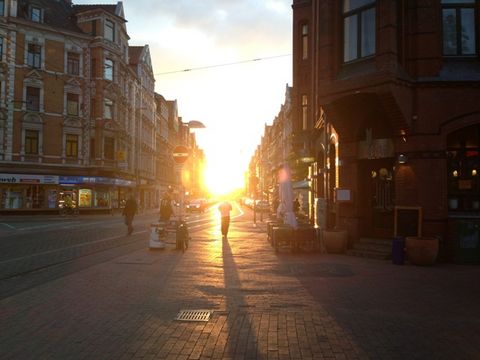#FairCity #LeibnizButterBiscuit #CenterForScienceAndBusiness
Hanover
A VIBRANT, GREEN CITY IN THE NORTH
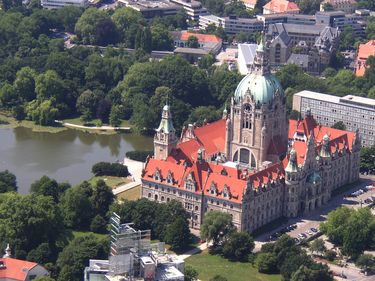
Hanover is home to the largest city forest in Europe. In fact, about 13 percent of the city is covered by parks and gardens – a perfect balance to the hectic pace of life in downtown Hanover. The city regularly hosts several internationally acclaimed trade fairs and is home to the world-famous Leibniz shortbread biscuits.
Facts
536,925 Inhabitants ¹
49,545 Students ²
8 Higher education institutions ²
WELCOME TO HANOVER
Hanover is a very modern city. The state capital of Lower Saxony is an important centre of science and business thanks to numerous companies and organisations. Eight institutions of higher education are located throughout the city. Trade fairs and conventions take place all year round. The whole world looks to Hanover once a year during the “Hannover Messe”, the world’s largest trade fair for industrial products.
Downtown Hanover was almost completely destroyed during World War II. That’s why there are very few historic buildings in town. One of them is the Neues Rathaus (New City Hall). You can take a special lift into the dome of the Gothic building. It follows the arc of the dome and can only take six people at a time. From the 100-metre high viewing platform, you can enjoy a great view of the entire city. In the oldest part of the city centre, you’ll find the Marktkirche (Market Church). This is an example of the typical architectural style you often find in northern Germany. Red-brick buildings are distinctive features in many towns and villages in the north. In Burgstrasse near the Marktkirche, you can visit the oldest half-timbered house in Hanover which dates back to the 16th century.
The Maschsee is a manmade lake and is remarkable in that it has no natural river inlet. The “Kröpcke”, located at the centre of town, is the best-known meeting point for city tours with numerous shops and stores. Aegidientorplatz, lovingly nicknamed “Aegi” by the locals, is an important centre of town. There you’ll find modern buildings where banks and insurance companies have their headquarters.
Tip
My favourite city quarter is Linden. There you’ll discover lots of little shops and cafés and enjoy its multicultural charm. Arrange to meet your friends at “Unterm Schwanz” – the statue of Ernst August on his horse in front of the main train station – a popular starting point for many activities.
In the past, Hanover was the residence of kings and princes. It was when the and were built. Today you can visit the gardens with all their different flowers and plants, as well as the museum inside the castle.
Interview
DIANA FROM ROMANIA
LIVING IN HANOVER
Many inhabitants and especially students like to go jogging, study or barbecue in the Georgengarten, a large park. The Eilenriede, Germany’s largest city forest, is located on the outskirts of Hanover.
Culture plays an important role in Hanover. There are many museums which exhibit art of every period and style, and familiarise visitors with the history of the city. The is one of the most prestigious museums of modern art of the 20thand 21st century.
Many students live and spend their free time in the Linden district. The “Limmer” – a pedestrian street – is the centre of this vibrant quarter. The nightlife in Linden is leftist-bohemian and uncomplicated. In addition to a summertime beer garden, the cultural centre hosts parties, exhibitions and flea markets on a regular basis. There are many cafés, each with its own individual flair.
The “Fête de la Musique” is Hanover’s largest music festival. In fact, it’s an international festival, celebrated in more than 540 other cities around the world. Musicians perform at venues all over town under the open sky for free and fill the entire city with music.
In August many residents spend their evenings on the shore of the Maschsee. With its mixture of culinary delicacies, good music and relaxed atmosphere, you almost feel like you’re on holiday. The Schützenfest and Oktoberfest are more old-fashioned and traditional. You can start by trying a “Lüttje Lage” – a mixed beverage of beer and schnapps, typical of the region around Hanover.
#CityByTheNeckar #PhilosophersPath #RuinsOfTheHeidelbergCastle
